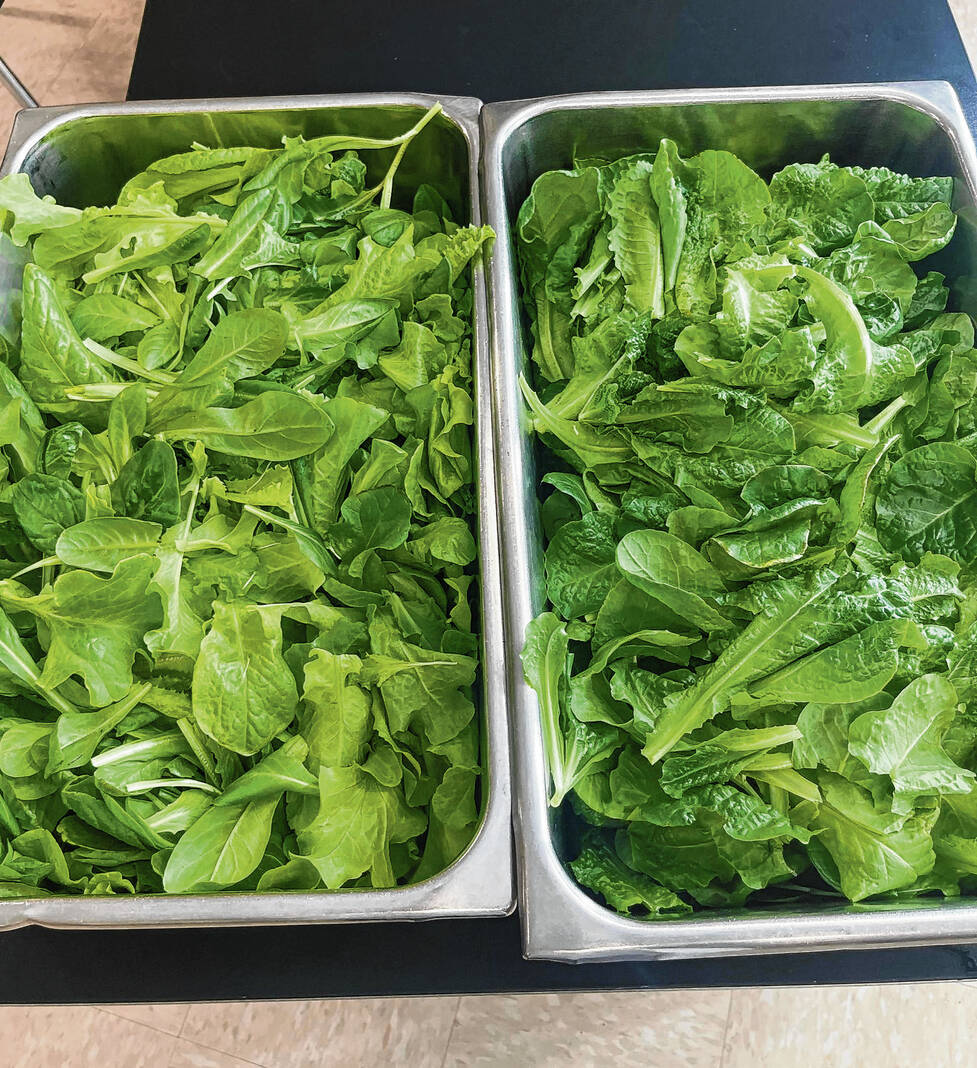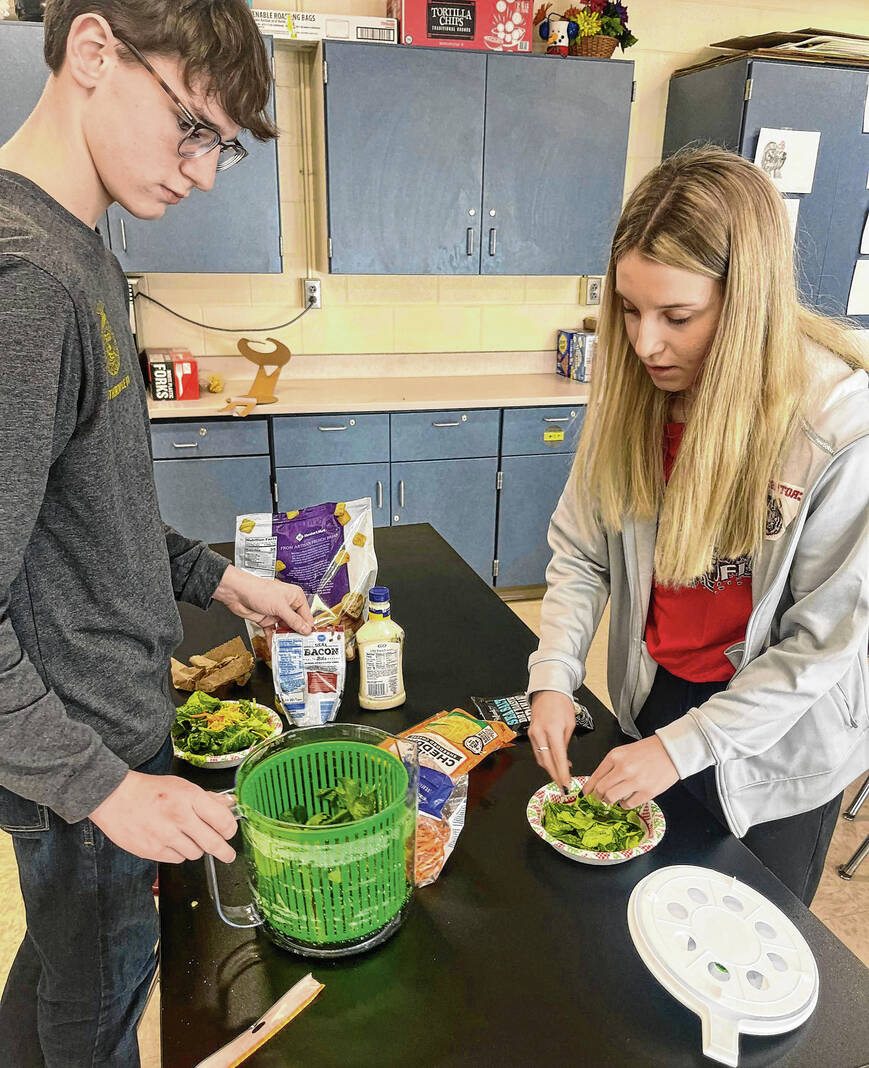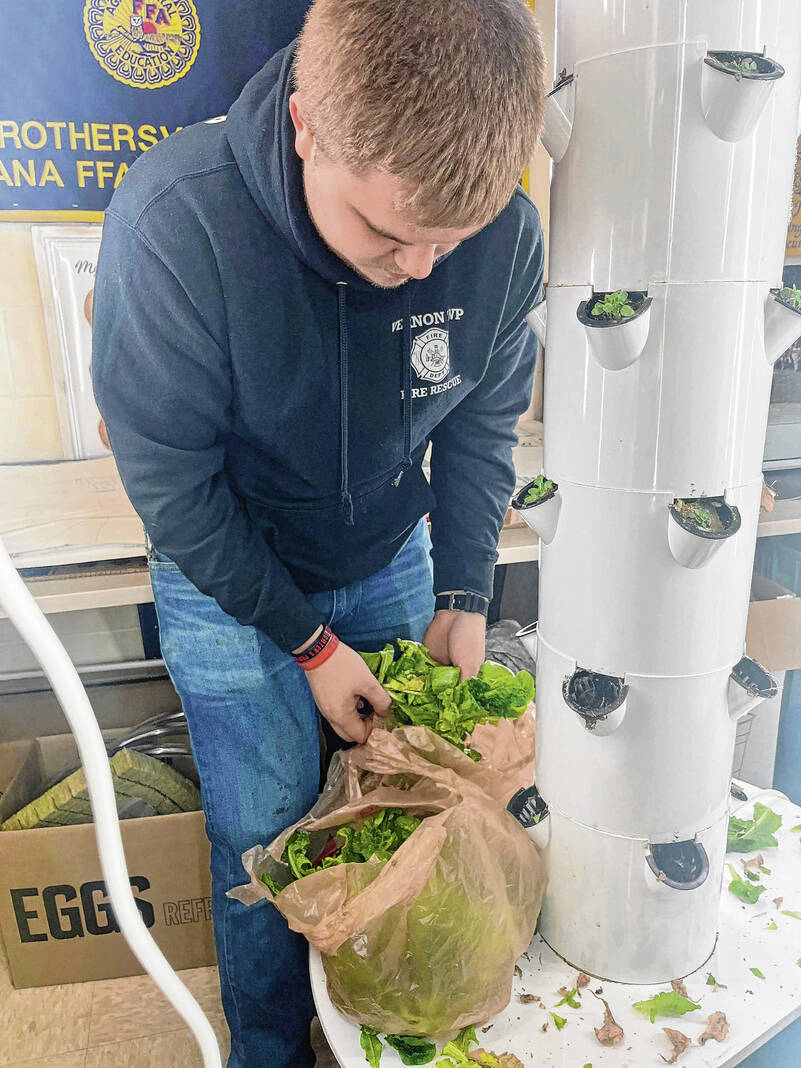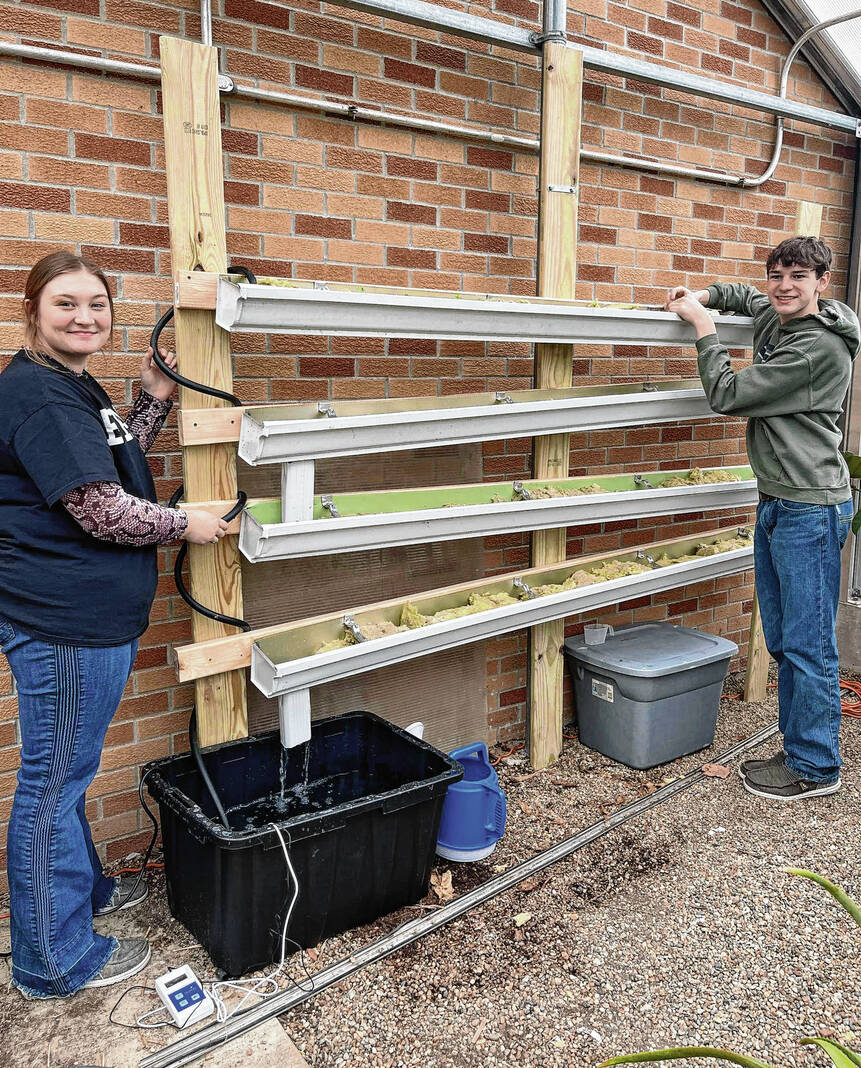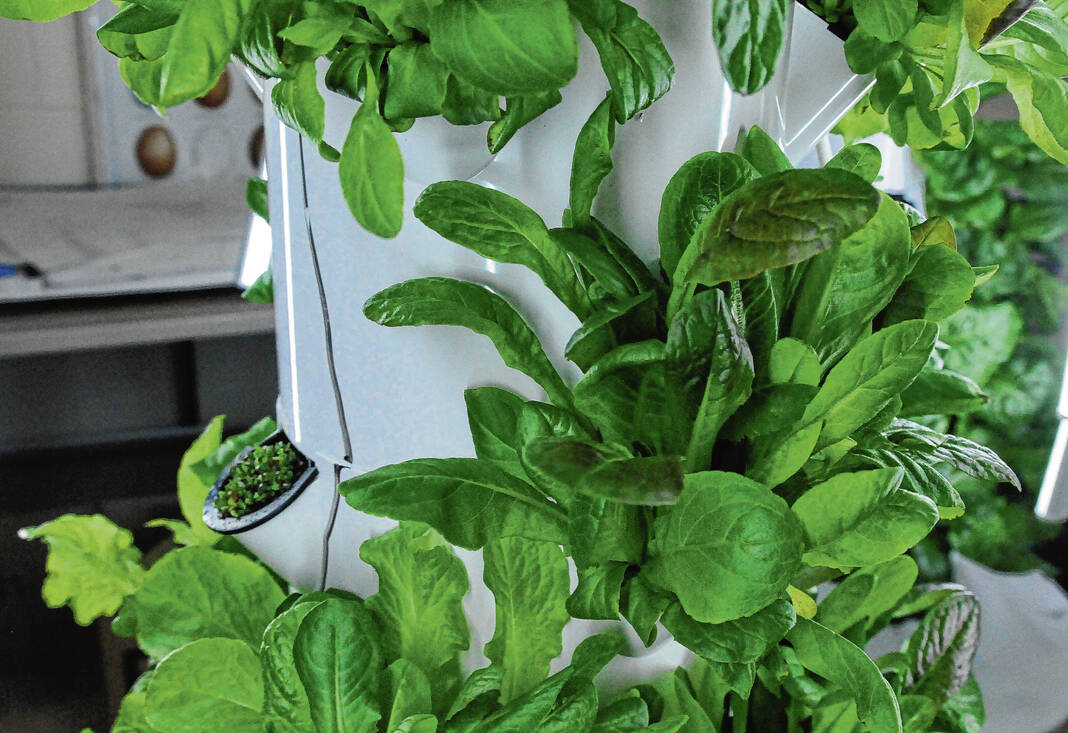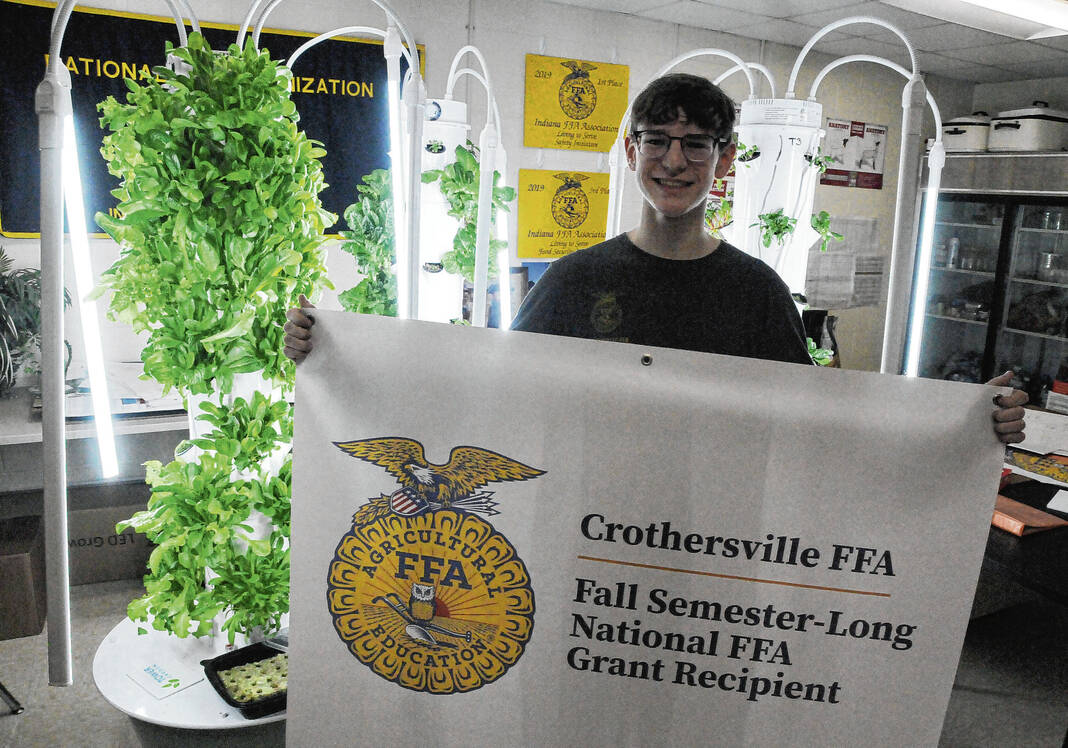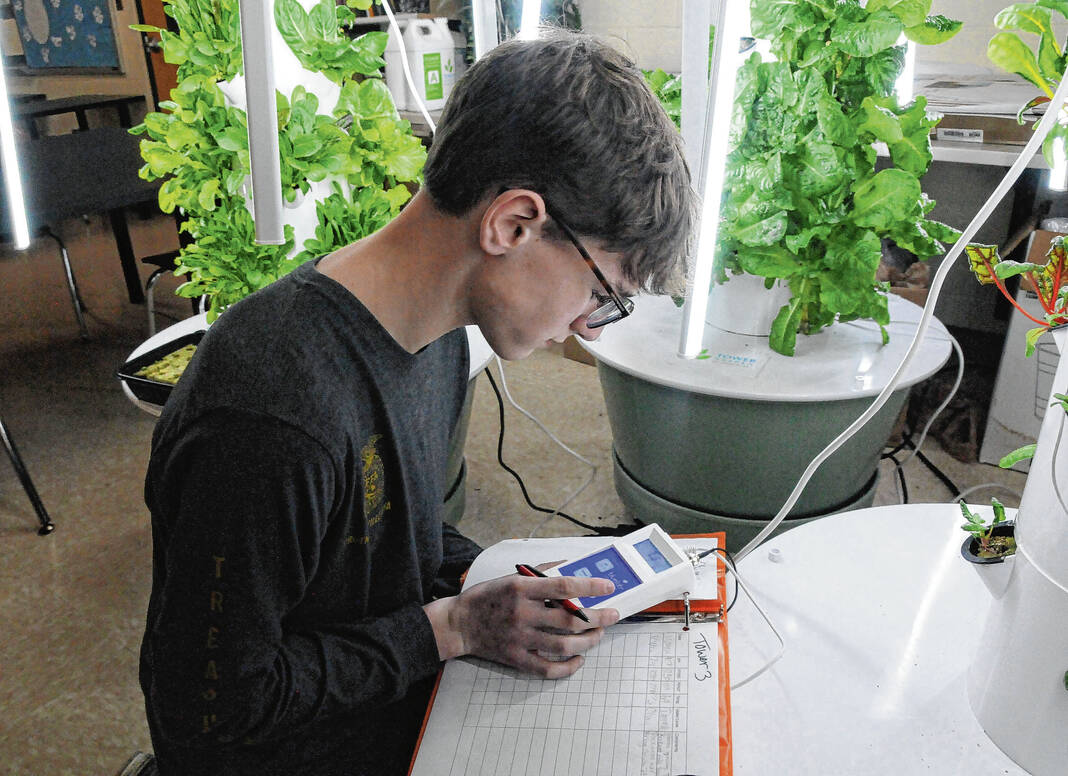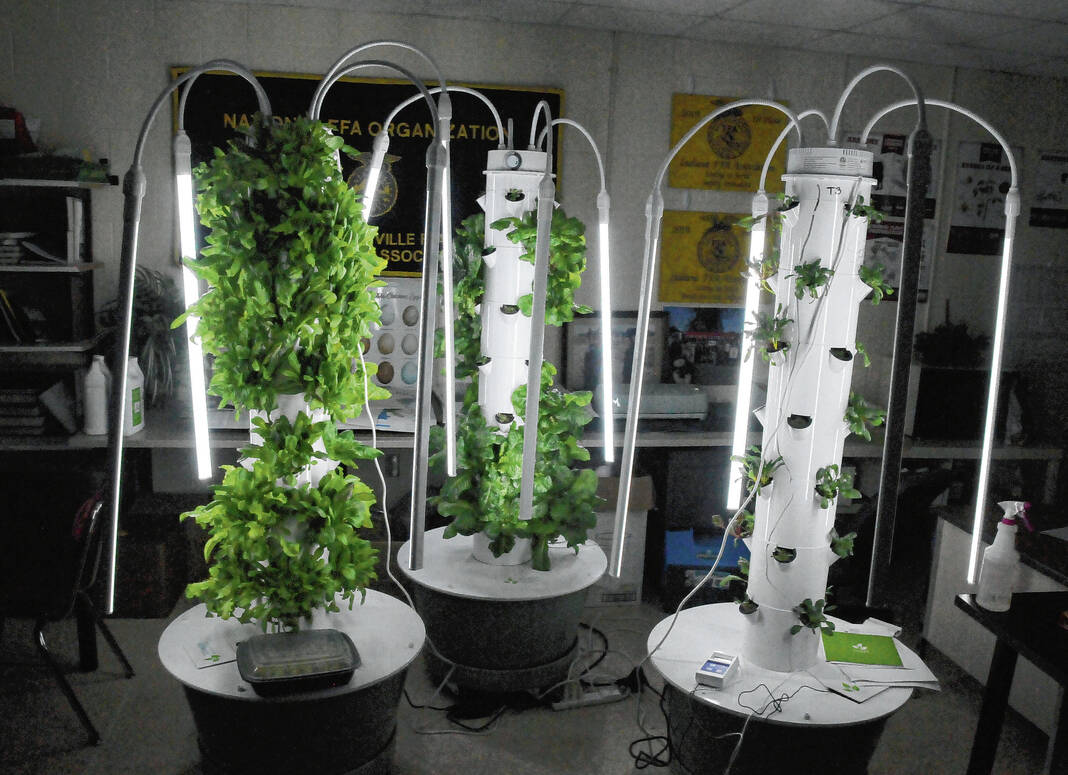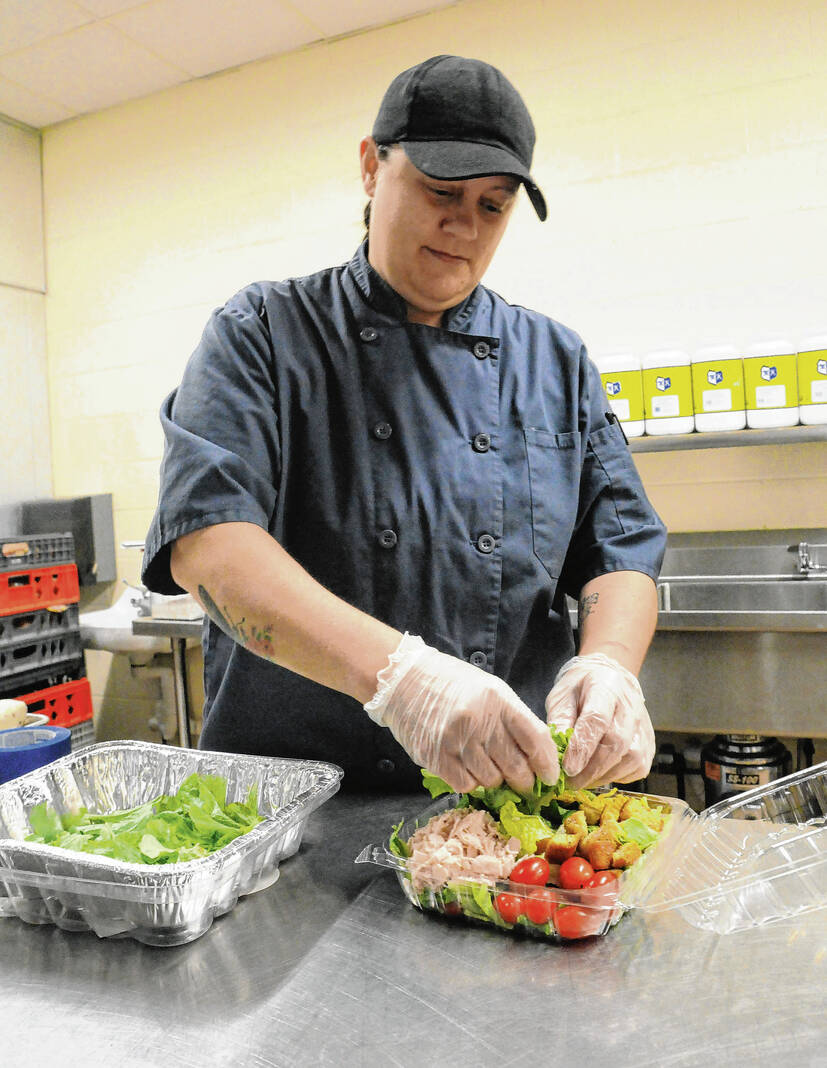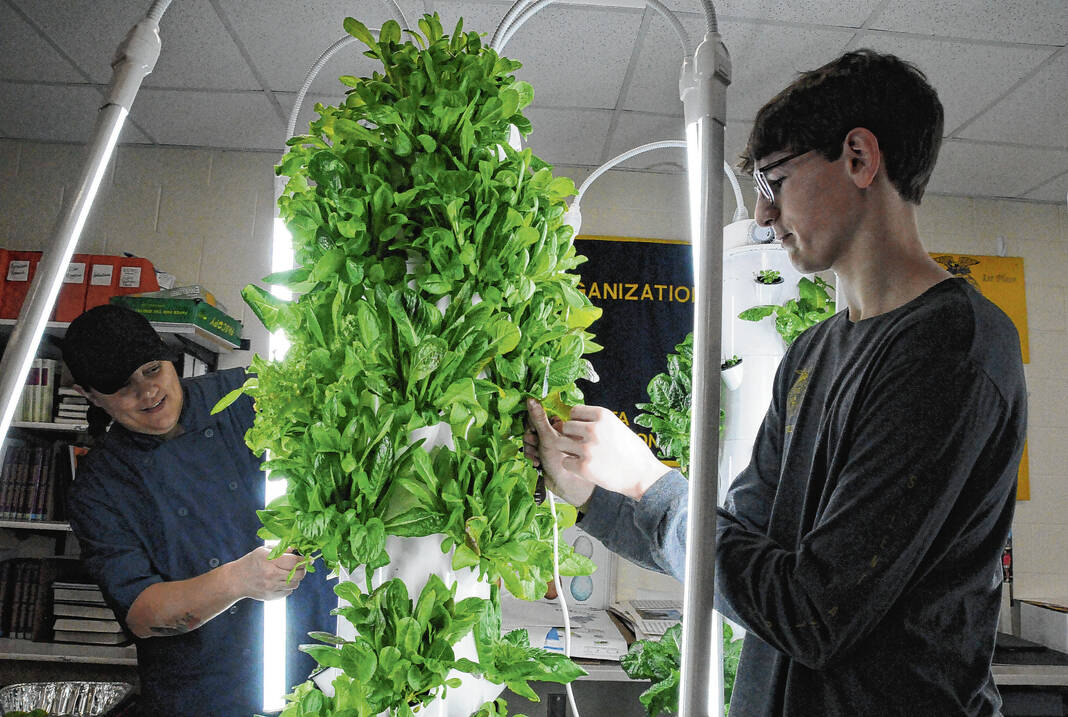CROTHERSVILLE — On a Thursday morning last August, Crothersville FFA members had an extra ticket to the Indiana State Fair and asked Adviser Linda Myers to take them.
They asked again that afternoon, and then on Friday morning, they asked her what time they were leaving Saturday morning. She finally agreed to go.
The last thing they saw that day was a garden that had a hydroponic wall in it. The FFA members were intrigued and wanted to build one in the school’s greenhouse.
“Being from Jackson County, you see a lot of fields, and I just thought that was really the only way you could grow stuff, so seeing this, it was pretty fascinating,” freshman Baron Riley said. “It was something new. It was something innovative.”
In the meantime, Myers was talking to Richard Beckort with Purdue Extension Jackson County about how her students were interested in hydroponics and wanted to know where she could get a grow tower.
Luckily, he had four and asked Myers if she wanted one. It was free, so she said, “Yes.”
Beckort took it to the school and helped them put it together.
“We sewed seeds. We’re absolutely in love,” Myers said.
To get a second grow tower, Riley filled out an application for the Fall Semester-Long National FFA Grant.
In October, they learned via email the chapter was one of five in the state and only a few in the country that received the grant. They received $1,200, which is nearly the cost of a grow tower. It was Riley’s first time writing a grant.
“It had to do a lot with lesson planning around alternative farming, such as hydroponics, that you had to fill out,” he said. “You had to fill out the budgeting for it, meaning how much you spend on the whole tower and how much you’d receive for it, and then a lot of other different stuff, like contact information and all that.”
The students then told Myers about the school’s new head cook, Amy Schleter, using her own herbs out of her garden for food served in the cafeteria, and they asked about growing those herbs for her on a grow tower.
Riley wrote a grant through Farm Credit Mid-America, and Crothersville was a top 12 finalist out of four states and received $1,000. They used that to build a guttering system in the school’s greenhouse.
The third grow tower came from a $250 grant from Farm Bureau and the remainder of the cost being covered by Jackson County Farm Bureau after Riley and fellow FFA member Kendall Berry presented during one of its meetings.
So in a matter of a few months, Crothersville had three grow towers and a gutter system without having to spend much of its own money at all. All they had to do was buy some seed, and they also bought two extensions for the grow towers.
“I think it’s really good you don’t have to spend a lot of money on land to grow stuff,” Riley said of the hydroponics. “It’s very energy-efficient. It’s very water-efficient. It’s just so innovative and such a cool thing to have in your school. I think it’s just incredible.”
Each of the grow towers has 28 cells in which to put germinated seeds, and each cell has a neck cup with slits inside of it so water from the reservoir can get in, Riley said.
“(The reservoir) has all of our water in it, it has all of the nutrients in it that the plants are going to need and then it’s got a pump in the middle that will bring it straight up to the top (of the grow tower) and it will just trickle down to all of these plants,” he said.
The towers also have three LED lights that act as sunlight to help the seeds grow into plants.
Myers received a $250 Classroom Education Grant from the Community Foundation of Jackson County to buy a device to measure pH, nutrients and temperature of the water. Riley said anything above 65 degrees is good.
“You always have to make sure that the water level is good enough so that your pump doesn’t burn up, and you have to make sure that they are all getting enough water that they are going to grow and enough light that they are going to keep on growing efficiently,” he said.
Through his research, Riley knows how much nitrogen each type of plant needs, and he puts them on the same grow tower.
So far, Crothersville has grown bibb lettuce, romaine lettuce, spring mix, Swiss chard and spinach.
“You can really grow pretty much anything in them,” Riley said. “Of course, you can’t grow really deep-rooted plants, like corn or any of that. Lettuce and herbs especially thrive in this because they love water, they have shallow rooting systems. You can grow things like cucumbers and tomatoes in them, but tomatoes and cucumbers are just so big that it would be hard, and you also have to pollinate them.”
The plan is to grow cucumbers and tomatoes in the gutter system.
“It can be out in the greenhouse. We can have bees out there or we’ll self-pollinate, one of the two,” Myers said. “Of course, we can’t have bees in here (the classroom), so that’s why we try to keep the leafy stuff in here.”
Riley said he knows to harvest the plants a little before they reach their maturity. If it grows too much and gets milk inside it, that’s really bitter tasting.
“With other lettuces that aren’t fresh, I don’t think it’s as good. It doesn’t taste as good,” he said. “But then when you’re growing fresh food, it just tastes so good.”
Myers said the reason some of the cells have baby plants in them is Riley is trying to stagger the harvest so he always has something available.
Either Schleter comes down to Myers’ classroom and gets what she needs off of the grow towers or the students take it to her.
Schleter said the grow towers have benefited her because the plants being grown on them are in short supply to order.
“Every time I order, I get shorted, and they are able to fill in the gaps,” she said. “The prices went up quite a bit, too, on the lettuce because it was in short supply, so then using this, it’s free for me. It really helps.”
Green lettuce is one of the components she’s supposed to use in salads served in the cafeteria, so that’s another benefit.
“Instead of buying romaine or something like that, we substitute with bibb lettuce that we’ve been using so far, and then they have spring mix they are growing,” Schleter said.
The lettuce is used on wraps in the cafeteria, too.
“I didn’t expect to have hydroponics, but I did expect in the years to come — I didn’t think now it would be so soon — to have fresh food in the kitchen. I love it,” Schleter said. We get things that we probably wouldn’t be able to order before because they are so expensive. They are more kind of an exotic almost.”
Myers said it’s great to see the grow towers benefit students and school.
“We’re ecstatic,” she said. “From the education standpoint, it can’t get any better than this because you have a problem, we’ve solved in. In between time, you’ve had research done, they’ve written grants. The school has zero dollars in this. We’re buying the seeds, which is very minimal. I am beyond proud of them. It’s really working in reverse. In 35 years of teaching, they are motivating me.”

